Geometric Arithmetic
Lin WENG
Algebraic and Arithmetic Structures of Moduli Spaces
Advanced Studies in Pure Mathematics 58
Math. Soc. Japan, (2010), 225-359.
(I) A general Class Field Theory for both Riemann surfaces using semi-stable parabolic bundles and for p-adic number fields using what we call semi-stable filtered $(\varphi,N;\omega)$-modules; and
(II) Non-abelian zeta functions for both function fields over finite fields using semi-stable bundles and for number fields using semi-stable lattices.
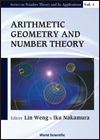
Lin WENG
Arithmetic Geometry and Number Theory
World Sci., (2006), 211-400
(A) Representation of Galois Group, Stability and Tannakian Category;
(B) Moduli Spaces, Riemann-Roch, and New Non-Abelian Zeta Function; and
(C) Explicit Formula, Functional Equation and Geo-Ari Intersection.
Zeta Functions |
|
|

|
Murmurations and Sato-Tate Conjecture for High Rank Zetas
of Elliptic Curves II: Beyond Riemann Hypothesis Z.SHI and L. WENG |
As a continuation of our earlier paper in this series, we offer a new approach to murmurations and Sato-Tate laws for higher rank zetas of elliptic curves. Our approach here does not depend on the Riemann hypothesis for the so-called $a$-invariant $a^{~}_{E/\mathbb F_p;n}$ in rank $n(\geq 3)$ even for the Sato-Tate law, rather, on a much refined structure, a similar of which was already observed earlier by Zagier and the senior author of this paper when the rank $n$ Riemann hypothesis was established. Namely, instead of the rank $n$ Riemann hypothesis bounds $\left|\frac{a^{~^{~}}_{E/\mathbb F_p;n}}{2\sqrt{p^n}}\right|\leq 1$ on which our first paper is based, we use the asymptotic bounds $\left| \frac{\ {a^{~^{~}}_{E/\mathbb F_p;n}}\,+(n-1)p+(n-5)\ }{(n-1)\sqrt p}\right|\leq 1$. Accordingly, rank $n$ Sato-Tate law can be established and rank $n$ murmuration can be formulated equally well, similar to the corresponding structures in the abelian framework for Artin zetas of elliptic curves. |
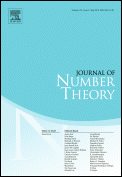
|
Murmurations and Sato-Tate Conjecture for High Rank Zetas
of Elliptic Curves Z.SHI and L. WENG |
For elliptic curves over rationals, there are a well-known conjecture of Sato-Tate and a new computational guided murmuration phenomenon, for which the abelian Hasse-Weil zeta functions are used. In this paper, we show that both the murmurations and the Sato-Tate conjecture stand equally well for non-abelian high rank zeta functions of the $p$-reductions of elliptic curves over rationals. We establish our results by carefully examining asymptotic behaviors of the $p$-reduction invariants $a^{~}_{E/\mathbb F_q,n}\ (n\geq 1)$, the rank $n$ analogous of the rank one $a$-invariant $a^{~}_{E/\mathbb F_q}=1+q-N_{E/\mathbb F_q}$ of elliptic curve $E/\mathbb F_{q}$. Such asymptotic results are based on the counting miracle of the so-called $\alpha^{~}_{E/\mathbb F_q,n}$- and $\beta^{~}_{E/\mathbb F_q,n}$-invariants of $E/\mathbb F_q$ in rank $n$, and a remarkable recursive relation on the $\beta^{~}_{E/\mathbb F_q,n}$-invariants, both established by Weng-Zagier in one of their PNAS papers. |
2020.jpg)
|
HIGHER RANK ZETA FUNCTIONS FOR ELLIPTIC CURVES Proc. Natl. Acad. Sci. USA 117 (2020), no.9, 4546-4558 L. WENG and D. Zagier |
Non-abelian zeta function is defined for any smooth curve $X$ over a finite field $\mathbb F_q$ and any integer $n\ge 1$ by $$ \zeta_{X/\mathbb F_q,n}(s) \,=\, \sum_{[\mathcal E]}\frac{|H^0(X,\mathcal E)\!\smallsetminus\!\{0\}|} {|\mathrm{Aut}(\mathcal E)|}\;q^{-\text{deg}(\mathcal E)s} \qquad(\Re(s)>1)\,,$$ where the sum is over moduli stack of $\mathbb F_q$-rational semi-stable vector bundles $\mathcal E$ of rank $n$ on $X$ with degree divisible by $n$. This function, which agrees with the usual Artin zeta function of $X/\mathbb F_q$ if $n=1$, is a rational function of $q^{-s}$ with denominator $(1-q^{-ns})(1-q^{n-ns})$ and conjecturally satisfies the Riemann hypothesis. In this paper we study the case of genus 1 curves in detail. We show that in that case the Dirichlet series $$\mathcal Z_{X/\mathbb F_q}(s) \,=\, \sum_{[\mathcal E]}\frac1{|\mathrm{Aut}(\mathcal E)|}\;q^{-\text{rank}(\mathcal E)s} \qquad(\Re(s)>0)\,,$$ where the sum is now over isomorphism classes of $\mathbb F_q$-rational semi-stable vector bundles $\mathcal E$ of degree 0 on $X$, is equal to $\prod_{k=1}^\infty\zeta_{X/\mathbb F_q}(s+k)\,$, and use this fact to deduce the validity of the Riemann hypothesis for $\zeta_{X,n}(s)$ for all $n$. |
2020.jpg)
|
HIGHER RANK ZETA FUNCTIONS AND $\mathrm{SL}_n$-ZETA FUNCTIONS FOR CURVES Proc. Natl. Acad. Sci. USA 117 (2020), no.12, 6279-6281 L. WENG and D. Zagier |
A different approach to zeta functions for curves leads to the so-called group zeta function ${\widehat\zeta}_X^{G/P}(s)$ associated to a connected split algebraic reductive group $G$ and its maximal parabolic subgroup $P$. We will be interested in the $SL_n$-zeta ${\widehat\zeta}_X^{\mathrm{SL}_n}(s):={\widehat\zeta}_X^{SL_n/P_{n-1,1}}(s)$. Our main result will be a proof of the following theorem on the conjecture of special uniformity of zetas: $$\widehat\zeta_{X,n}(s)\,=\,{\widehat\zeta}_X^{\mathrm{SL}_n}(s).$$ This theorem should be seen as a joint result of the present authors and of Mozgovoy and Reineke, because it is proved by comparing a formula established here for the $\mathrm{SL}_n$-zeta with a formula given in their work for rank $n$ non-abelian zeta using Hall algebra and wall-crossing. |
|
|
Symmetries and the Riemann Hypothesis
Lin WENG Algebraic and Arithmetic Structures of Moduli Spaces Advanced Studies in Pure Mathematics 58 Math. Soc. Japan, (2010), 173-223 |
Associated to reductive groups and their maximal parabolic subgroups are genuine zeta functions. Naturally related to Riemann's zeta function and governed by symmetries, including that of Weyl, these zeta functions are expected to satisfy the Riemann hypothesis.
\[\]\({\bullet\ \ \color{Red}{\mathrm{Zetas\ for} (G,P)/\mathbb Q}}\) \(\displaystyle{ \widehat\zeta^{G/P}_{\mathbb Q}(s):= {\mathrm{Norm}}( {\mathrm{Res}}_{{\langle \lambda-\rho,\beta_j^\vee\rangle=0, 1\leq j\leq |P|}}\,( \sum_{w\in W} \frac{e^{-\langle \lambda,T\rangle}} {\prod_{\alpha\in\Delta}\langle \lambda-\rho,\alpha^\vee\rangle}\cdot \prod_{\alpha>0, w\alpha<0} \frac{\widehat\zeta(\langle\lambda,\alpha^\vee\rangle)} {\widehat\zeta(\langle\lambda,\alpha^\vee\rangle+1)} ))}\) \({\bullet\ \ \color{Blue}{\mathrm{Functional\ Equation:}} \qquad \boxed{\exists\qquad {constant}\quad c_{G/P},\quad \mathrm{s.t.} \qquad \widehat\zeta^{G/P}_{\mathbb Q}(c_{P/Q}-s)= \widehat\zeta^{G/P}_{\mathbb Q}(s)}}\) \({\bullet\ \ \color{Blue}{\mathrm{Riemann\ Hypothesis:}} \qquad\boxed{\widehat\zeta^{G/P}_{\mathbb Q}(s)=0\qquad\Rightarrow\qquad\mathrm{Re}(s)=\frac{c_{G/P}}{2}}}\) |
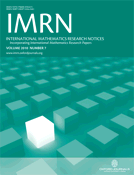
|
Zeta Functions for $\small{G_2}$ and Their Zeros
Masatoshi SUZUKI, Lin WENG International Mathematics Research Notice 2009 (2009), 241-290 |
The exceptional group $\small{G_2}$ has two maximal parabolic subgroups $\small{P_{\mathrm{long}}}$ and $\small{P_{\mathrm{short}}}$ corresponding to the so-called long root and short root. In this paper, the second named author introduces two zeta functions associated with $\small{P_{\mathrm{long}}}$ and $\small{P_{\mathrm{short}}}$ respectively, and the first named author proves that these zetas satisfy the Riemann hypothesis. |

|
Zeta Functions for $\small{Sp(2n)}$
Lin WENG appendix to: The Riemann hypothesis for Weng's zeta function of $\small{Sp(4)}$ over $\small{\mathbb Q}$, $\quad$ Masatoshi SUZUKI Journal of Number Theory, 129(2009), 569-579 |
Recently, Weng defined more general new abelian zeta function associated to a pair of a semi-simple reductive algebraic group and its maximal parabolic subgroup. This new zeta function is expected to satisfy standard properties of zeta functions. In this paper, we prove that the Riemann hypothesis for Weng's zeta function attached to the symplectic group of degree four. This paper includes an appendix written by L. Weng, in which he explains a general construction for zeta functions associated to $\small{Sp(2n)}$. |

|
Geometric Approach to L-Functions
Lin WENG The Conference on L-Functions World Sci., (2007), 219-370 |
We initiate a geometric approach to the theory of L-functions. It consists of two parts: Chapters 1-4, used to be called 'Non-Abelian L-Functions for Number Fields', reveal a general theory, and Chapters 5-9 give a detailed account of ranks two and three zetas. In particular, as a generalization of the Dedekind zeta function, Weng defined the high rank zeta functions and proved that they have standard properties of zeta functions, namely, meromorphic continuation, functional equation, and having only two simple poles. The rank one zeta function is the Dedekind zeta function. |
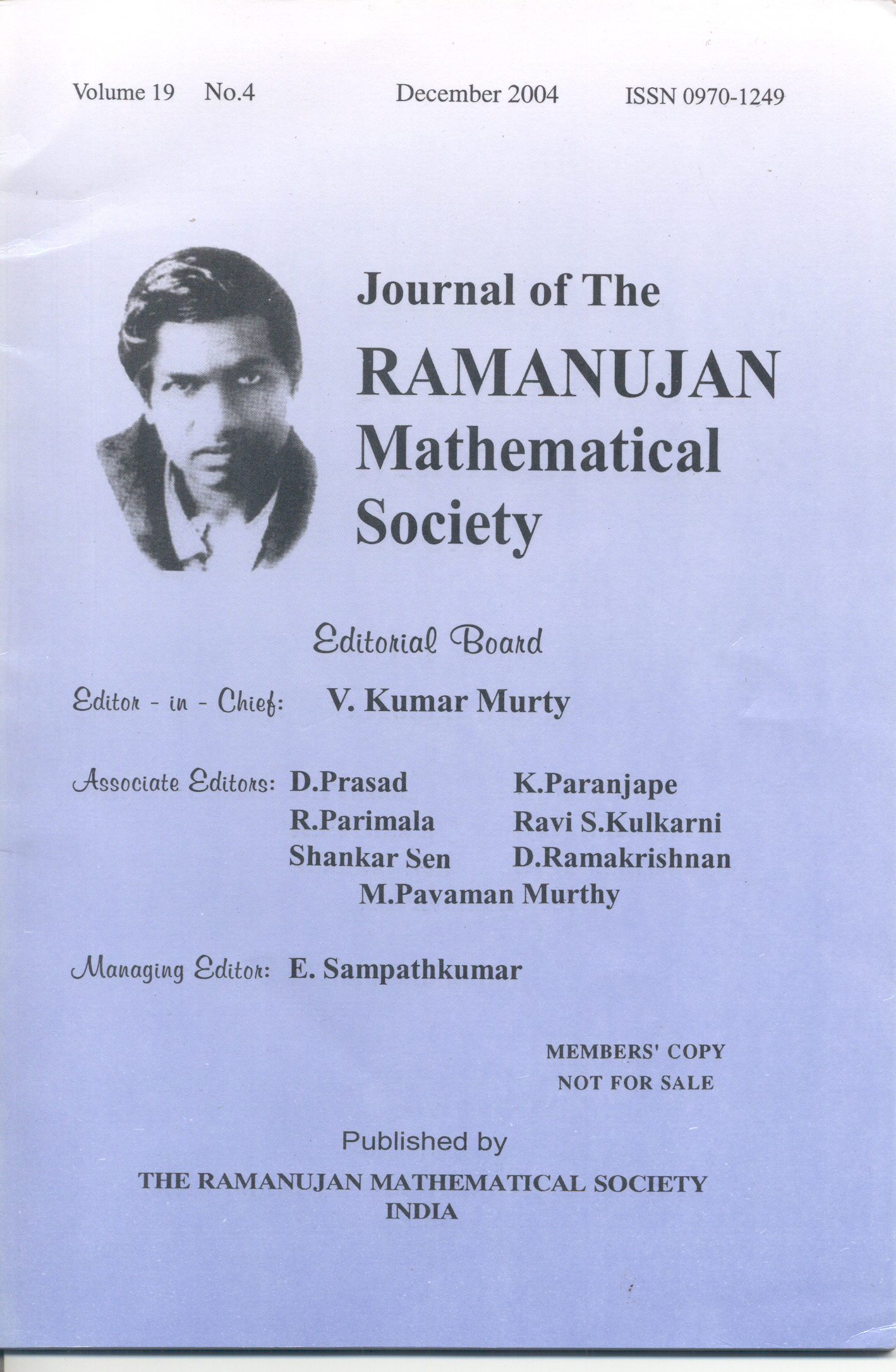
|
A Rank Two Zeta and its Zeros
Lin WENG J. Ramanujan Math. Soc., 21(2006), 205-266
|
In this paper, we first reveal an intrinsic relation between non-abelian zeta functions and Epstein zeta functions for algebraic number fields. Then, we expose a fundamental relation between stability of lattices and distance to cusps. Next, using these two relations, we explicitly express rank two zeta functions in terms of the well-known Dedekind zeta functions. Finally, based on such an expression, we show that all zeros of rank two non-abelian zeta functions are entirely sitting on the critical line whose real part equals to 1/2. This is an integrated part of our Geo-Arithmetic Program. |
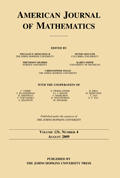
|
Non-Abelian Zeta Functions for Function Fields
Lin WENG Amer. J. Math., 127(2005), 973-1017 |
In this paper we initiate a geometrically oriented construction of non-abelian zeta functions for curves defined over finite fields. More precisely, we first introduce new yet genuine non-abelian zeta functions for curves defined over finite fields, by a "weighted count" on rational points over the corresponding moduli spaces of semi-stable vector bundles using moduli interpretation of these points. Then we define non-abelian L-functions for curves over finite fields using integrations of Eisenstein series associated to $\small{L^2}$-automorphic forms over certain generalized moduli spaces. |
Arakelov Theory |
|
|
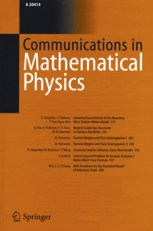
|
Deligne Products of line Bundles over Moduli Spaces of Curves
Lin WENG, Don ZAGIER Comm. Math. Phys., 281 (2008), 793-803 |
We study Deligne products for forgetful maps between moduli spaces of marked curves by offering a closed formula for tautological line bundles associated to marked points. In particular, we show that the Deligne products for line bundles on the total spaces corresponding to "forgotten" marked points are positive integral multiples of the Weil-Petersson bundles on the base moduli spaces. |
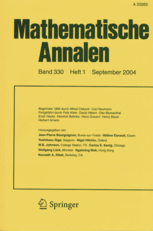
|
Omega-Admissible Theory II: Deligne pairings over
Moduli spaces of punctured Rimann surfaces Lin WENG Math. Ann., 320 (2001), 239-283 |
For singular metrics, there is no Quillen metric formalism on cohomology determinant. In this paper, we develop an admissible theory, with which the arithmetic Deligne-Riemann-Roch isometry can be established for singular metrics. As an application, we first study Weil-Petersson metrics and Takhtajan-Zograf metrics on moduli spaces of punctured Riemann surfaces, and then give a more geometric interpretation of our determinant metrics in terms of Selberg zeta functions. We end this paper by proposing an arithmetic factorization for Weil-Petersson metrics, cuspidal metrics and Selberg zeta functions. |
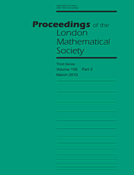
|
Omega-Admissible Theory
Lin WENG Proc. London Math. Soc., 79 (1999), 481-510 |
Arakelov and Faltings developed an admissible theory on regular arithmetic surfaces by using Arakelov canonical volume forms on the associated Riemann surfaces. Such volume forms are induced from the associated Kaehler forms of the flat metric on the corresponding Jacobians. So this admissible theory is in the nature of Euclidean geometry, and hence is not quite compatible with the moduli theory of Riemann surfaces. In this paper, we develop a general admissible theory for arithmetic surfaces (associated with stable curves) with respect to any volume form. In particular, we have a theory of arithmetic surfaces in the nature of hyperbolic geometry by using hyperbolic volume forms on the associated Riemann surfaces. Our theory is proved to be useful as well: we have a very natural Weil function on the moduli space of Riemann surfaces, and show that in order to solve the arithmetic Bogomolov-Miyaoka-Yau inequality, it is sufficient to give an estimation for Petersson norms of some modular forms. |

|
Relative Bott-hern Secondary Characteristic Classes and Arithmetic Grothendieck-Riemann-Roch Theorem I, II
Lin WENG Preprints of Max-Planck Institute for Mathematics, 4732(91-79), 4986(94-51), 4987(94-52)(1991, 1994, 1994), pp.24, 261, 206
|
In these two volumes (and an original short announcement), we introduce six axioms for relative Bott-Chern secondary characteristic classes and prove the uniqueness and existence theorem for them. Such a work provides us a natural way to understand and hence to prove the arithmetic Grothendieck-Riemann-Roch theorem. |

|
Hyperbolic Metrics, Selberg Zeta Functions and
Arakelov Theory for Punctured Riemann Surfaces Lin WENG Lecture Note Series in Mathematics Osaka Univ. 6(1998) |
Hyperbolic Metrics, Selberg Zeta Functions and Arakelov Theory for Punctured Riemann Surfaces |
Geometry |
|
|

|
The Asymptotic Behavior of the Takhtajan-Zograf Metric
Kunio OBITSU, Wing-Keung TO, Lin WENG Comm. Math. Phys., 284 (2008), 227-261 |
We consider a universal degenerating family of punctured hyperbolic Riemann surfaces of signature (g,N). In this paper, we obtain the asymptotic behavior of the Takhtajan-Zograf metric on the Teichmueller space of punctured Riemann surfaces. |

|
$\small{L^2}$-Metrics, Projective Flatness and Families of Polarized Abelian Varieties
Wing-Keung To, Lin WENG Trans. Amer. Math. Soc., 356 (2004), 2685-2707 |
We compute the curvature of the $\small{L^2}$-metric on the direct image of a family of Hermitian holomorphic vector bundles over a family of compact Kaehler manifolds. As an application, we show that the $\small{L^2}$-metric on the direct image of a family of ample line bundles over a family of abelian varieties and equipped with a family of canonical Hermitian metrics is always projectively flat. When the parameter space is a compact Kaehler manifold, this leads to the poly-stability of the direct image with respect to any Kaehler form on the parameter space. |
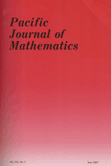
|
Admissible Hermitian Metrics on Families of Line Bundles over Certain Degenerating Riemann Surfaces
Wing-Keung TO, Lin WENG Pacific J. Math., 197 (2001), 441-489 |
We show that a family of line bundles of degree zero over a plumbing family of Riemann surfaces with a separating (resp. non-separating) node p admits a nice (resp. almost nice) family of flat p-singular Hermitian metrics. As a consequence, we give necessary and sufficient conditions for a family of line bundles over such families of Riemann surfaces to admit an (almost) nice family of p-singular Hermitian metrics which are admissible with respect to the canonical/hyperbolic (1,1)- forms onthe Riemannsurfaces. |

|
Green's Functions for Quasi-Hyperbolic Metrics on Degenerating Riemann Surfaces with a Separating Node
Wing-Keung TO, Lin WENG Ann. Global Anal. Geo., 17 (1999), 239-265 |
We consider a family of compact Riemann surfaces of genus q>1 degenerating to a Riemann surface with a separating node and many non-separating nodes. We obtain the asymptotic behavior of Green's functions associated to a continuous family of quasi-hyperbolic metrics on such degenerating Riemann surfaces. |

|
Curvature of the $\small{L^2}$-Metric on the Direct Image of a Family of Hermitian-Einstein Vector Bundles
Wing-Keung TO, Lin WENG Amer. J. Math., 120 (1998), 649-661 |
For a holomorphic family of simple Hermitian-Einstein holomorphic vector bundles over a compact Kaehler manifold, the locally free part of the associated direct image sheaf over the parameter space forms a holomorphic vector bundle, and it is endowed with a Hermitian metric given by the $\small{L^2}$ pairing using the Hermitian-Einstein metrics. Our main result in this paper is to compute the curvature of the $\small{L^2}$-metric. In the case of a family of Hermitian holomorphic line bundles with fixed positive first Chern form and under certain curvature conditions, we show that the $\small{L^2}$-metric is conformally equivalent to a Hermitian-Einstein metric. As applications, this proves the semi-stability of certain Picard bundles, and it leads to an alternative proof of a theorem of Kempf. |

|
The Asymptotic Behavior of Green's Functions for Quasi-Hyperbolic Metrics on Degenerating Riemann Surfaces
Wing-Keung TO, Lin WENG Manuscripta Math., 93 (1997), 465-480 |
We consider a family of compact Riemann surfaces of genus g>1 degenerating to a Riemann surface of genus g-1 with a non-separating node. We show that the Green's function associated to a continuous family of quasi-hyperbolic metrics on such degenerating Riemann surfaces simply degenerate to that on the smooth part of the noded Riemann surfaces. |

|
Analytic Torions of Spheres
Lin WENG, Yuching YOU International J. Math., 93 (1997), 465-480 |
The main result of this paper is to give the analytic torisons
of unit spheres in
Euclidean spaces with the standard Riemannian metric: \[\]\(Analytic\ torsion\ for\ the\ sphere\ {\small{{\mathbb S}^{2m-1}}}\ in\ the\ standard\ Euclidean\) \(space\ {\small{{\mathbb R}^{2m}}}\ is\ given\ by\) \[\small{\frac{2\pi^m}{(m-1)!}=\frac{1}{2^{m-1}(m-1)!}\cdot e^{-2m\zeta'(0)}}\] |
Classical Algebraic Geometry |
|
|
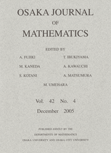
|
A Result on Bicanonical Maps of Surfaces of General Type
Lin WENG Osaka J. Math., 32 (1995), 467-473 |
\(\mathrm{Pluricanonical\ maps\ of\ surfaces\ of\ general\ type\ are\ left\ open\ only}\) \(\mathrm{for\ bicanonical\ maps\ with\ small}\ K^2(\leq 4), \mathrm{and\ for\ canonical\ maps.}\) \(\mathrm{For\ bicanonical\ maps,\ the\ non-trivial\ cases\ are\ these\ surfaces}\) \(\mathrm{with}\ p_g= 0\ \mathrm{and}\ K^2= 3,4.\ \mathrm{Our\ result\ is:}\) \[\] \({Let}\ S{\ be\ a\ minimal\ surface\ of\ general\ type\ with}\ p_g(S) = 0\ {and}\) \( K^2_S= 3{\ or\ 4.\ Then\ any}\ (-2)-curve\ in\ S \ \mathrm{cannot}\ be\ an\ irreducible\) \(component\ of\ the\ fixed\ part\ of\ the\ bicanonical\ {map}\ \phi_{|2K_S|.}\) |
Others |
|
|

|
Automorphic Forms, Eisenstein Series and Spectral Decomposition
Lin WENG Arithmetic Geometry and Number Theory World Sci., (2006), 123-210 |
This note is prepared for the reader who wants to learn Langlands' fundamental
results about Eisenstein series and spectral decompositions, say using Moeglin
and Waldspurger' Cambridge tract. It results from my six lectures given at a
special seminar on Automorphic Forms and Eisenstein Series at Department of
Mathematics, University of Toronto in 2005. Day One: Basics of Automorphic Forms Day Two: Eisenstein Series Day Three: Pseudo-Eisenstein Series Day Four: Spectrum Decomposition (I): Residual Process Day Five: Eisenstein Systems and Spectral Decomposition (II) Day Six: Arthur's Truncation and Meromorphic Continuation |

|
Standard Modules of Level l for $\small{\widehat{sl_2}}$ in terms of
Virasoro Algebra Representations Lin WENG, Yuching YOU Comm. Alg., 26 (1998), 613-625 |
We give the irreducible decomposition of the level one integrable highest weight modules of $\small{\widehat{sl_2}}$ associated to $\small{sl_2({\mathbb C})}$ for the action of the associated Virasoro algebra. In fact, using a realization of the modules, we will explicitly construct the highest weight vectors for the Virasoro algebra. As a by-product, we obtain the norm of these highest weight vectors for the inner product introduced by Garland. |
Last update: May 10, 2011 16:00 PM